12 Quick Remedies for Age Spots
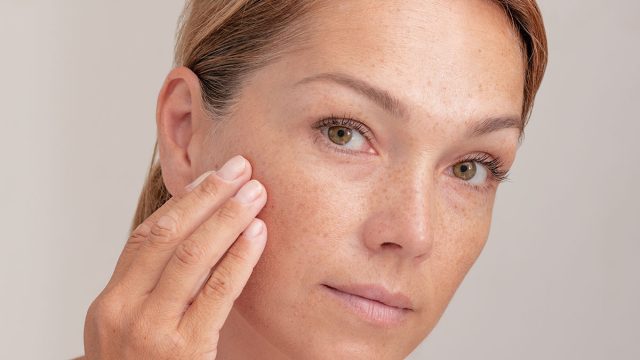
Age spots – small, flat, brown patches that typically appear on areas of the body, such as the face, hands, shoulders, chest and arms, that have been exposed to a lot of sunlight over time – are part of the aging process. However, there are things you can do to prevent them or get rid of them, according to Mona Foad, MD, MHS, Board Certified Dermatologist, MONA Dermatology. Here are key quick remedies to make the spots less noticeable.
Skin-Lightening Creams and Lotions
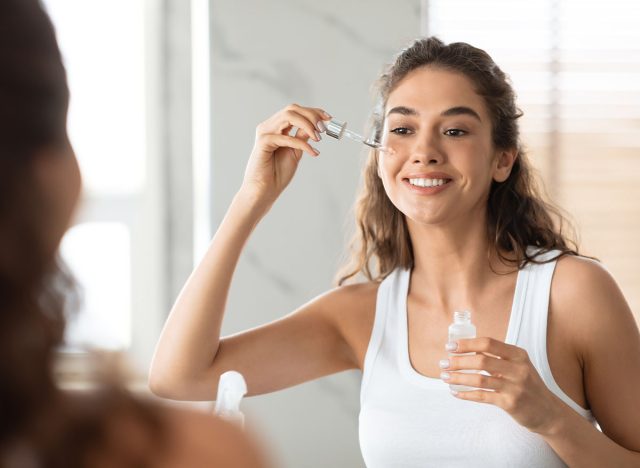
There are numerous skin-brightening options available in drugstores, retail stores, and doctor's offices that can be used to minimize the appearance of age spots, according to Dr. Foad. "Your first line of defense should be a good broad-spectrum sunscreen that can help protect your skin from both UVA and UVB rays," she says. One of her favorites is Colorscience Sunforgettable ® Total Protection ® Face Shield Flex SPF 50 "a mineral-based sunscreen that magically autocorrects to your skin tone," she says. "A great 2 in 1 product that combines antioxidants with sunscreen is SkinMedica Total Defense + Repair SPF 34. A second line of defense should be antioxidants such as Vitamin C serums and retinoids. "You could splurge for Skinceuticals Phloretin or choose a more affordable option with La Roche Posay's 10% Pure Vitamin C Serum l La Roche Posay," she says. "Retinoids are well known for their anti-aging benefits but can also help with brown spots. RetrinAL Advanced Correcting Serum is a good over-the-counter choice because it combines retinols, niacinamide, and hyaluronic acid." Her third line of defense is to use a pigment brightener that helps to not only lighten brown spots but also prevent brown spots from forming. "To prevent more brown spots from coming to the surface, look for creams that contain tranexamic acid, niacinamide, or kojic acid. Splurge on SKinMedica's Even & Correct Advanced Brightening Treatment. It's important to keep in mind that consistent use of creams for weeks or months is necessary for them to be effective on the skin," she says.
RELATED: 7 Morning Routines That Help Shed Weight Quickly
Physician-Prescribed Medication or Remedies
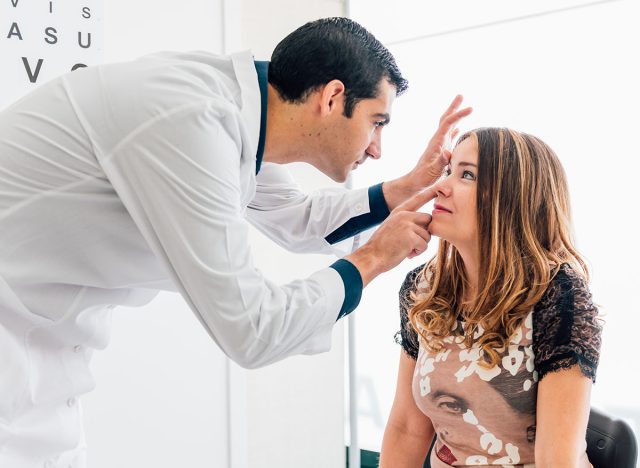
Some patients might require special formulas or creams that are stronger than drugstore options. "In such cases, physicians can prescribe more effective remedies, such as hydroquinone or retinoids to treat age spots," says Dr. Foad. "Hydroquinone is a bleaching cream that can be effective at treating superficial age spots, but it should not be used for more than 8-12 weeks at a time without taking a 'hydroquinone holiday; for 8-12 weeks before incorporating it back into your skincare routine," she explains. "It is not recommended to use anything higher than a 4% hydroquinone cream since this can actually cause more brown patches to form, a condition called ochronosis. As mentioned above, retinoids are well known for their anti-aging benefits but can also help with brown spots. Prescription Retin-A, or tretinoin, can be an effective way to treat some age spots."
Age Spot Procedures
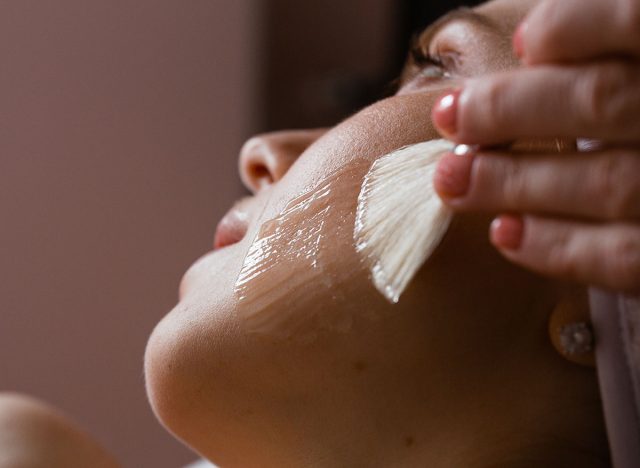
If you want to get rid of dark spots quickly, opting for a procedure that eliminates layers of discolored skin may yield better results compared to using a lightening cream. "These techniques include light and laser-based treatments, cryotherapy (freezing), microdermabrasion, and chemical peels. It's important to note that procedures typically entail higher costs than creams and carry additional risks," says Dr. Foad.
Laser Treatment

Laser treatment, also known as laser therapy or laser resurfacing, is a medical procedure that uses concentrated light beams to target and treat various skin issues. "Narrow beams of light are used to get rid of the cells that cause age spots without damaging the rest of the skin," explains Dr. Foad. Treatments such as picosecond lasers have minimal to no downtime, whereas resurfacing lasers may require some preplanning. "Depending on the treatment chosen and the amount of sun damage or age spots, desired results may require one to multiple sessions. Initially, laser treatments may lead to skin crusting or darkening of spots, yet these temporary side effects typically go away quickly."
Intense Pulse Light Treatments

IPL or BBL (Broadband light) is a great way to treat both brown age spots and redness from sun damage, according to Dr. Foad. "Filters are used to isolate the correct wavelength to target either redness or brown discoloration in your skin. You can treat the face as well as other areas of the body that have age spots. This is a very popular treatment because it has minimal downtime and is not painful. You will need multiple sessions to achieve the best results."
RELATED: 7 Spices That Boost Metabolism and Cut Fat
Chemical Peel
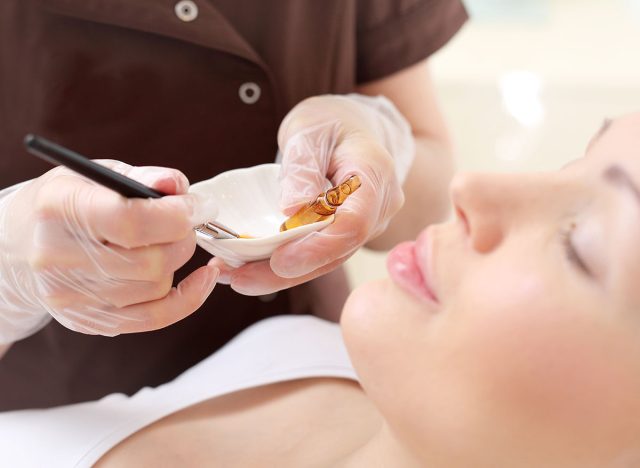
Another option is a chemical peel. "In a chemical peel, a solution containing acids is applied to the skin to eliminate layers where age spots are present. Peels can range from superficial glycolic or salicylic acid peels, which cause dry flaking skin for a few days, or stronger medium-depth peels, such as TCA or phenol peels, that are done by a done by a medical professional and cause more significant peeling with over a week of downtime," she explains. "Fresh skin will subsequently regenerate, resulting in a more even skin tone. Achieving desired outcomes may necessitate multiple sessions. Although generally considered safe, deeper chemical peels have risks, including scarring, infection, or alterations in skin pigmentation."
Freezing (Cryotherapy)
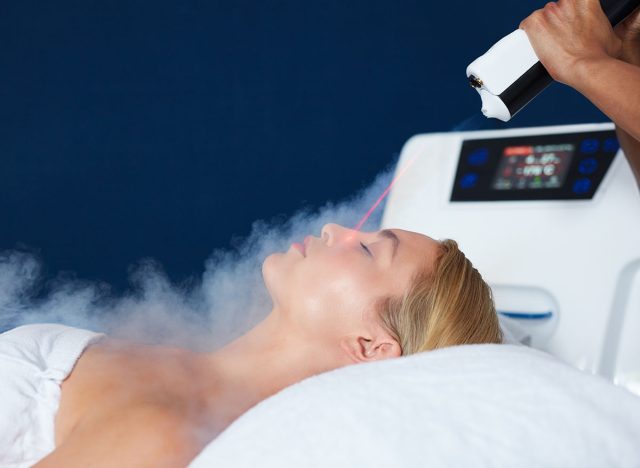
Cryotherapy is a medical procedure that uses extreme cold temperatures to treat various skin conditions or lesions. "Liquid nitrogen is applied to the skin for a few seconds to freeze the areas where the spots are. As your skin heals, it will develop a small crust revealing lighter skin underneath, but the treatment can cause irritation, swelling, blisters, or redness," says Dr. Foad.
Cautery

Electrocautery can be used to treat some age spots. "In this treatment, an electric current is used to create injury to the superficial layers of skin, causing an age spot to crust and scab and fall off," says Dr. Foad. "This is a controlled injury using very low energy and should only be used by an experienced health professional. It can be a more effective way to treat some age spots in people of color."
Dermabrasion
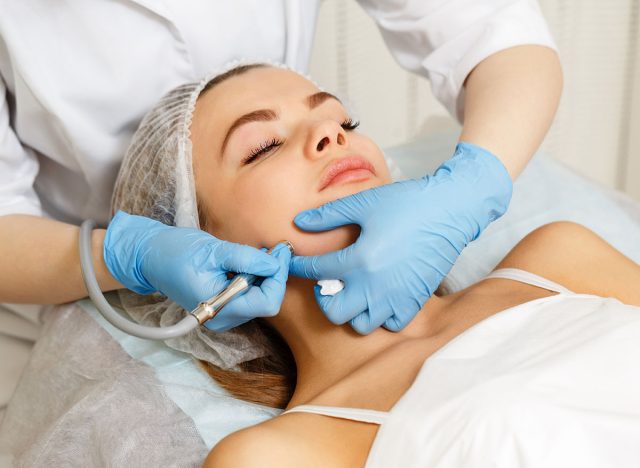
"For this procedure, a rapidly spinning brush is used to sand down the spotted skin area so new skin can replace it," explains Dr. Foad. "Multiple sessions may be necessary for this procedure to be effective. Potential side effects include redness, scabbing, and swelling. Additionally, it may take an extended period for your skin to fully heal and regain its normal appearance." She adds that this is not a common way to treat most age spots.
Microdermabrasion
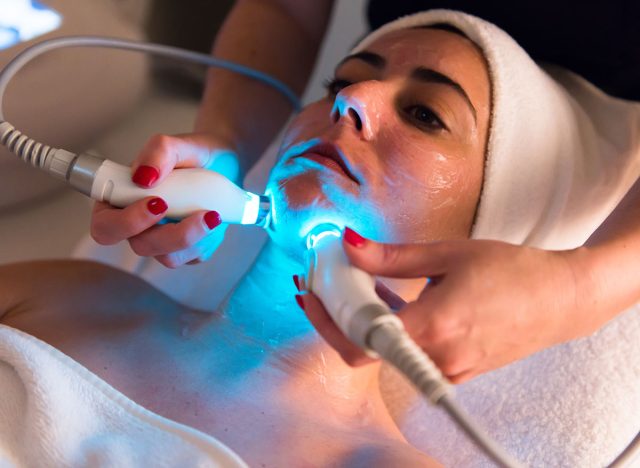
Microdermabrasion uses tiny crystals to exfoliate the skin instead of a spinning brush. "It's gentler on the skin compared to dermabrasion," says Dr. Foad. However, achieving the desired results for age spot reduction may require multiple treatments spread over several months. "This treatment will only treat the most superficial age spots and will not go below the surface of the skin. One advantage is it will leave your skin feeling more smooth and allows your skin care products to penetrate better. Possible side effects include temporary redness or flakiness of the skin."
Microneedling

For this procedure, fine needles are used to create small, evenly distributed punctures in your skin. "Your body reacts to these minor wounds by producing new collagen and elastin, essential components for youthful skin, to facilitate healing. Although this is a great way to rejuvenate the skin and improve overall skin texture and quality, it is not the best way to target age spots," explains Dr. Foad.
RELATED: This Is Exactly How to Lose Body Fat This Year
Age Spot Prevention
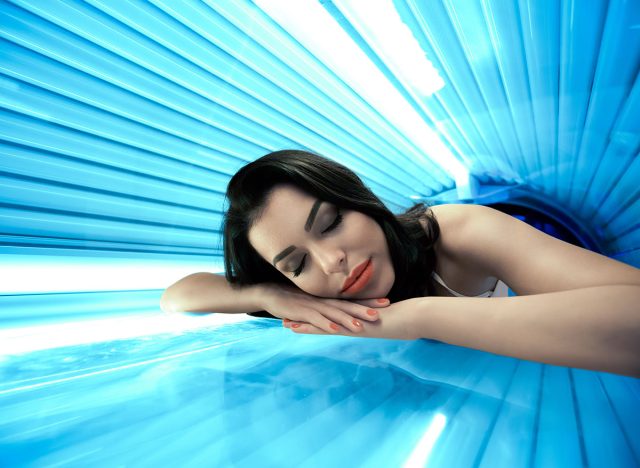
Prevention can be the most effective way to address age spots. "Avoiding excess sun exposure from a young age, avoiding tanning beds and using proper skin care can be the best defense," maintains Dr. Foad. "To maintain lighter age spots and prevent the formation of new ones, try to minimize sun exposure, particularly during peak hours of intensity. Apply a high-quality, broad-spectrum sunscreen before heading outdoors and reapply it frequently. Using gloves, hats, or other clothing on age-spot areas can help shield them and prevent new ones from forming."
💪🔥Body Booster: First thing's first: To avoid age spots in the first place, lather up in sunscreen every day.




